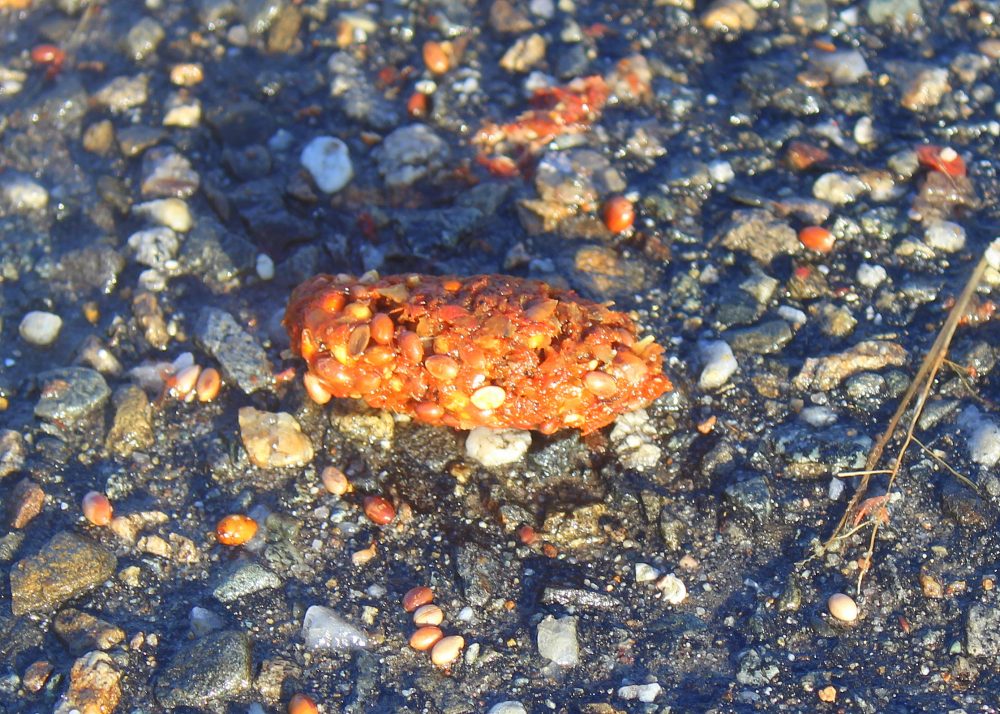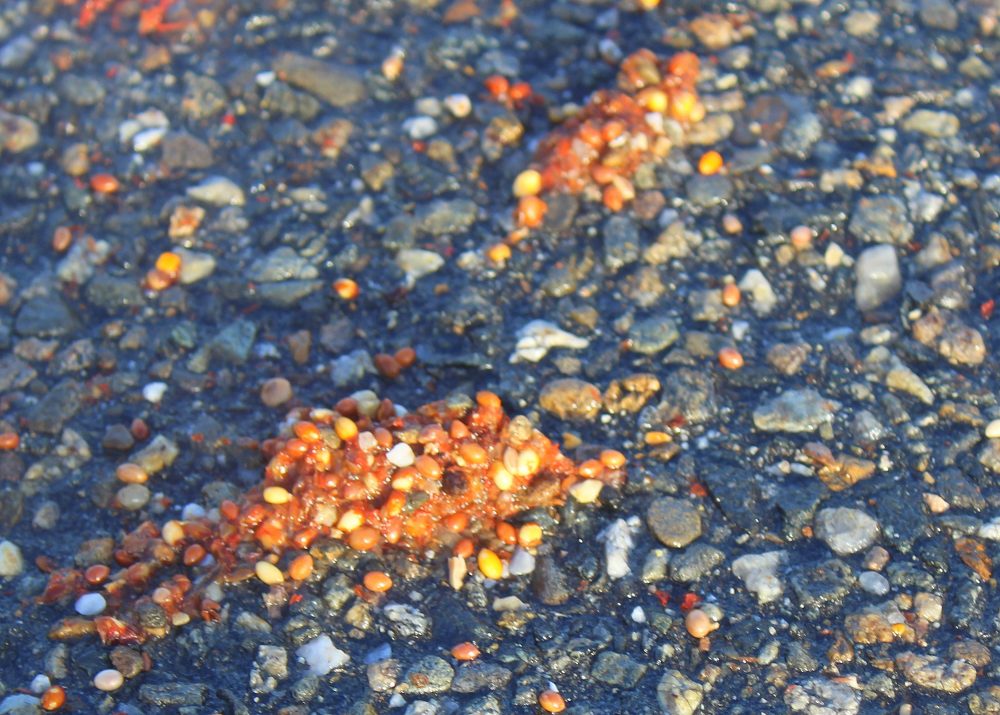At this time of year, the truck depot parking lot along South Canal St. in Lawrence, MA provides ample opportunity to collect ejected pellets from the wintering American and Fish Crows. Each morning, the Crows leave behind cast pellets from the night before. Little research is available on pellets from American and Fish Crows. From Birds of North America, we’ll look at the some of prior research on this topic.
Crows casts pellets throughout day and in roosts (Aldous 1944 , Good 1952 , Platt 1956 , Turnock 1975); pellets contain indigestible, sclerotized parts of insects, chaff, pits, bones, and eggshells (Platt 1956). Ejects pellets 4–8 h after food is eaten (Black 1941).
This photo below show a cast pellet during a morning pellet collection run. Typically the pellets may be intact, with many smaller seed nearby. Most of the calst pellets, like tis one, appear to be freshly cast, and most have a bright orange color.

Here is a quick summary from each of the selected research reports from the following cited authors from the American Crow monograph published by BNA Cornell Lab:
Aldous: During the colder months much can be learned of the food of crows by studying their pellets which abound at long established roosts. These pellets are regurgitated soon after the birds arrive at their nightly abodes. Pellets are likely regurgitated within two hours after crows enter a roost.
Good: Shortly after entering the roost the indigestable material in the stomach is regurgitated and discharged as a pellet. According to Aldous most of the pellets are disgorged within two hours after entering the roost. The stomachs of most of the specimens collected at roosts during the course of this study were completely empty indicating that the material had already been disgorged.
Platt: In my samples, plant material amounted to 69 per cent of the indigestible residues. Similar percentages have been found in other studies. The percentage of plant material was highest in the winter. Pellets collected from the wintering roosts contained 72.4 per cent plant material.
Turnock: The pellets were about 15 mm long and 7 mm in diameter. The analyses of these pellets confirm previous reports of crows concentrating their feeding on an abundant food source and indicate that at least for short periods, they prey almost exclusively on beneficial insects.

From these citations, here are a number of highlights that seem relevant for our observations today:
- Pellets ejected 4-8 hours after food is eaten
- Pellets are likely regurgitated after arrival at roost, maybe within 2 hours
- Typically plant material makes up much (69%) of Crow diet, consistent other studies
- During winter, likely much higher percentage of plant material
References cited:
Verbeek, N. A. and C. Caffrey (2002). American Crow (Corvus brachyrhynchos), version 2.0. In The Birds of North America (A. F. Poole and F. B. Gill, Editors). Cornell Lab of Ornithology, Ithaca, NY, USA. https://doi.org/10.2173/bna.647
Aldous, S. E. (1944). Winter habits of crows in Oklahoma. J. Wildl. Manage. no. 8:290-295.
Good, E. E. (1952). The life history of the American Crow Corvus brachyrhynchos Brehm. Phd Thesis, Ohio State Univ., Columbus.
Platt, D. (1956). Food of the crow, Corvus brachyrhynchosBrehm, in south-central Kansas. Univ. of Kans. Mus. Nat. Hist. Publ. no. 8:479-497.
Turnock, W. J. (1975). Beneficial insects in the diet of the Common Crow. Manitoba Entomol. no. 9:58-60.


Leave A Comment